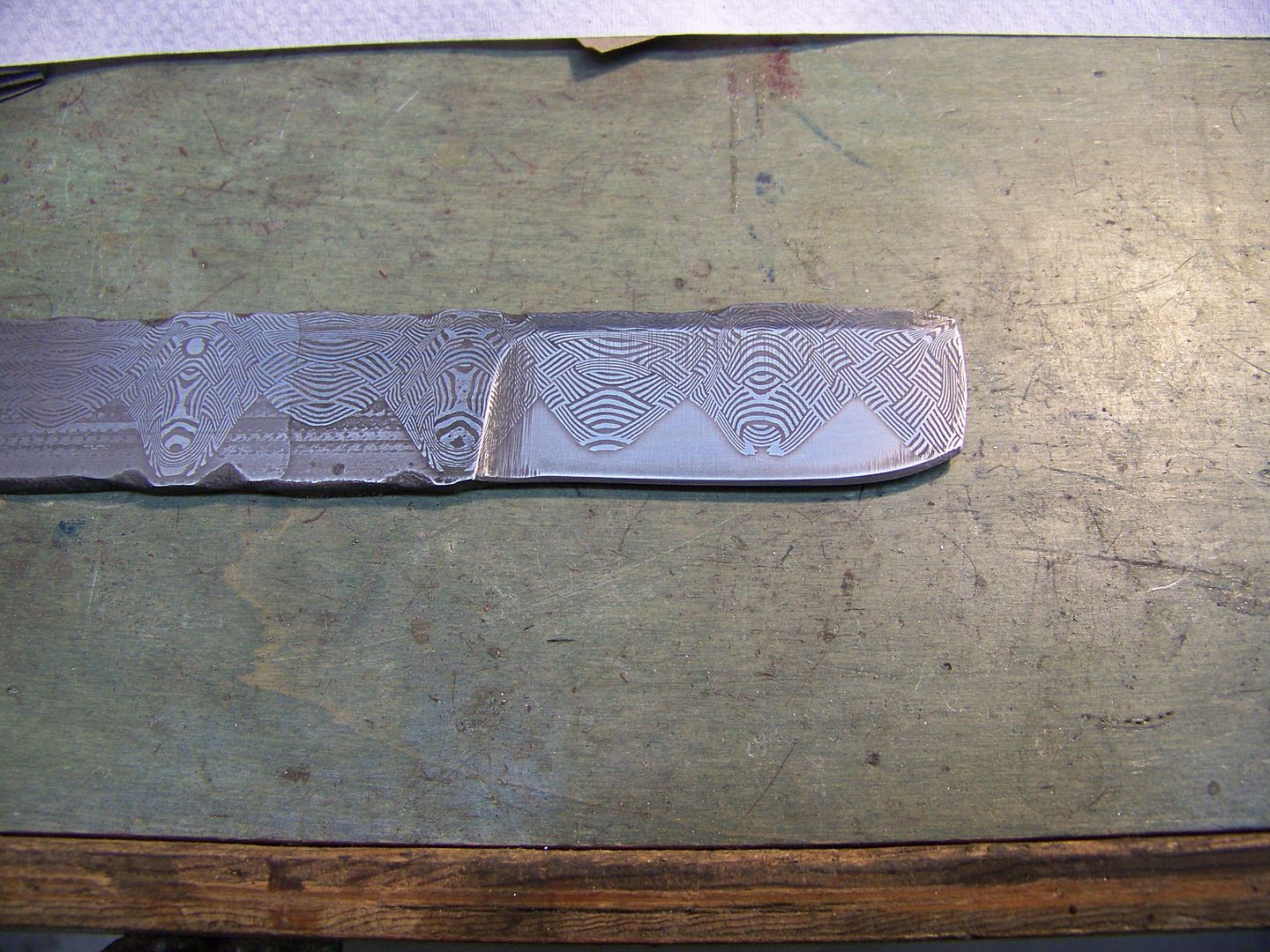Thanks much guys!
Bhamster, The triangles are very small in this case but if you were to make a much larger billet, this one is intended for pocket knives but a larger billet would produce larger triangles. I save all of them and someday plan to do something. They could be tossed into another canister just randomly and filled with high carbon powder metal to get who knows what kind of pattern or they could be stacked meticulusly (sp?) in a canister for a controlled pattern of some kind. One time I sent a friend a couple of the larger ones and he forged them into some small hunters. Forged out the pattern is nice but I like small and intentional patterns. Too much forging just stretches out the patterns.
This pattern is a basket weave but it doesnt have to be a basketweave for the next one. I could stack steels or bars of damascus that didnt quite work out as expected in a canister and go through this sequence of welding, drawing, chopping, 4 way and re-stacking ect. Mosiacs can be 4 way or 9 way stacked. Remember though if you 9 way something the pattern may get so small its unrecognizable. I have some basket weave that is micro sized from drawing it out too far. Sure looks cool though.
Canister welding opens up a whole nuther world of patterns as does the accordian cutting and flattening method of exposing the pattern from the end view to the side view of the bar. Steel is cheap and if the triangles never get used again its not the end of the world.

